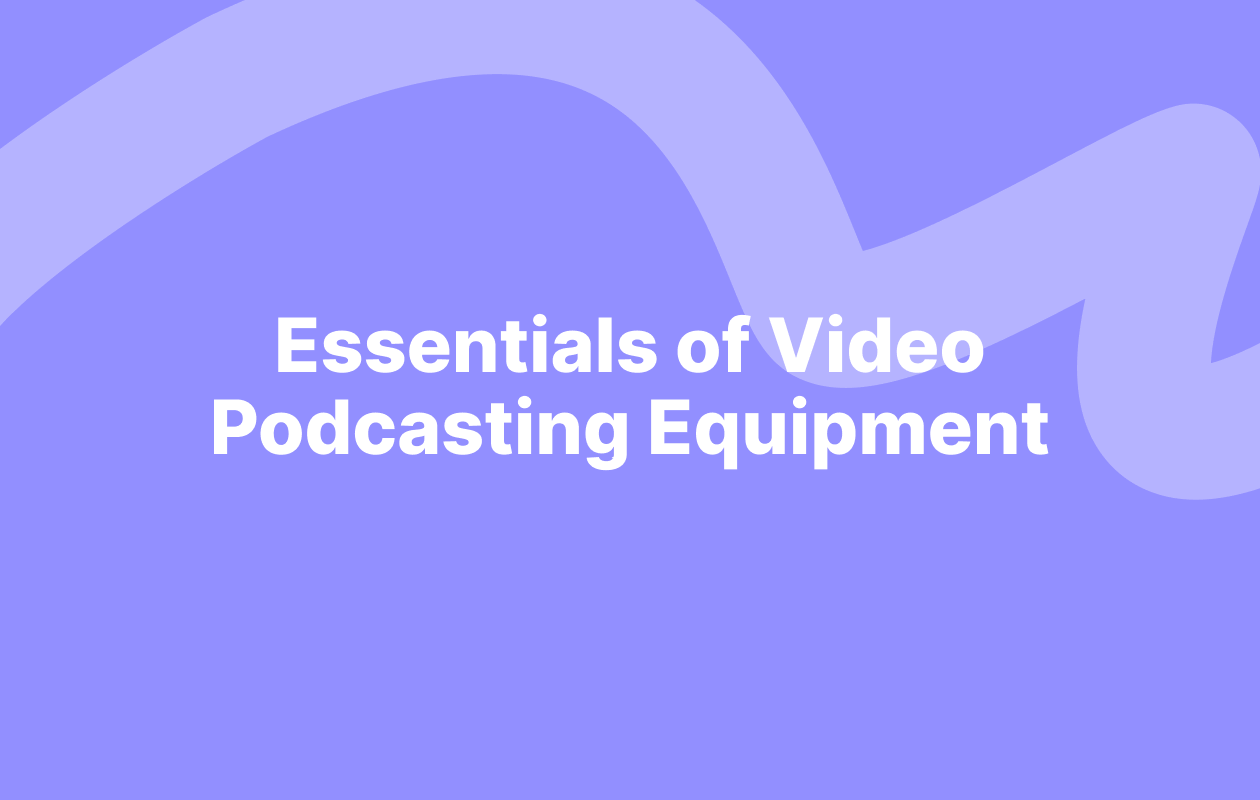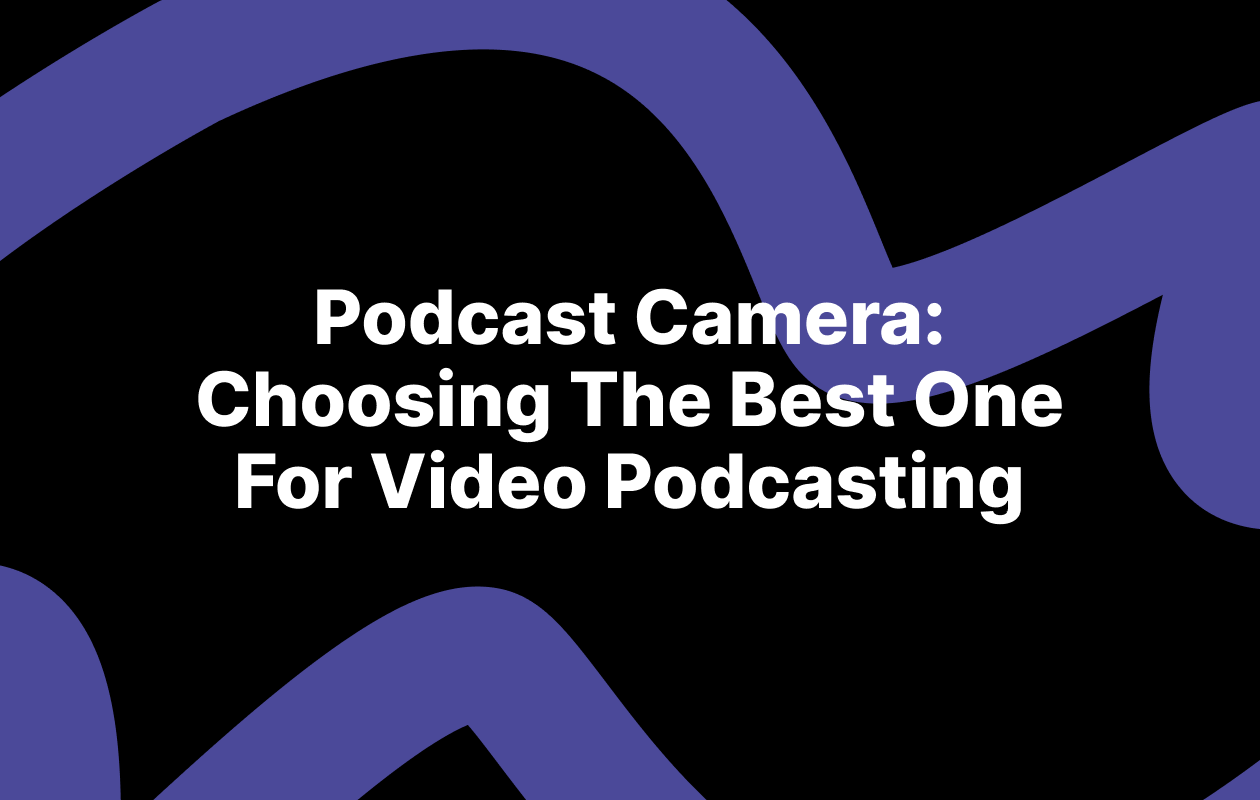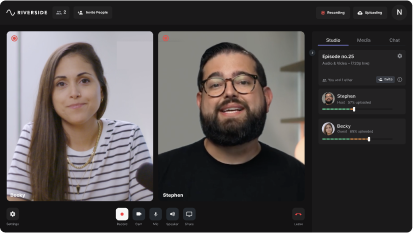Last Updated
February 5, 2023
Best Video Podcast Camera: iPhone Continuity Camera vs. Webcam vs. Sony Mirrorless

If you want upgrade your video podcast, we're going to discuss three options for getting better video quality.
The first is going be Continuity Camera using the iPhone and the new macOS Ventura. It's an incredible new feature that may save you from having to buy any additional hardware.
We're also going to cover webcam options to help you get the best value for your dollar.
Continuity Camera for Video Podcasts
Your first option that's going to give you great video quality is an iPhone running iOS 16 and your Mac running macOS Ventura. A brand new feature called Continuity Camera allows you to use your iPhone as a webcam. No third party apps or hardware are required with Continuity Camera. You can select your iPhone as the video input inside Riverside and many other applications.
This is what it looks like to use the back camera on an iPhone.
The iPhone 14 Pro does have great camera improvements, and the quality of the back camera video is high. You can even get a mount from Belkin that magnetically attaches to the back of your iPhone 12 or newer, and can sit right on top of your laptop.
If you have any issues using your iPhone as a webcam and various web browsers, check out the video below. We walk through troubleshooting tips for various browsers, so you can use Continuity Camera. If you want an option that's always connected to your computer, no matter what, then a webcam might be for you.
High-Quality Webcams for Video Podcasts
Opal C1
There are a lot of high-end webcams, for example the Opal C1. This webcam can record up to 4k and boasts an impressive feature set. It is, however, more expensive than other options on the market. We have a comparison of the Opal C1 versus an iPhone’s video quality which you can check out that video below.
Logitech StreamCam
While you might get slightly better video quality from high-end webcams, you can find great value in a webcam like the Logitech StreamCam.
This is a USB-C webcam that you can leave attached to your computer. It boasts 1080p high definition video quality. And because it’s a Logitech product, it has no shortage of customization inside the Logitech app. It gives you better quality than a built-in webcam on a laptop.
The Logitech StreamCam is typically $150 (although you can sometimes find it on sale as low as $130). It's probably the most inexpensive way to upgrade your video from a built-in cam.
You can check out the quality you’ll get from the Logitech StreamCam in the video below. It’s very easy to connect and get working immediately. In fact, Riverside can use it in the online studio and you can use it to record locally.
Mirrorless Cameras for Video Podcasts
The best option for adding video to your podcast is getting a mirrorless camera, especially one with an interchangeable lens. This will give you video with blurred background or bokeh. These also make use of great auto focus. These ensure that you are sure locked and clear at all times during your recording.
Many of them are very flexible and allow you to record locally to the SD card. You can even connect your mirrorless camera to a computer via USB-C cable. Your computer will see it as a webcam. We have an entire video using mirrorless cameras as a webcam. You can check out that video below.
Sony Mirrorless Cameras
If you're considering a mirrorless camera with an interchangeable lens (meaning you can change the lenses in or out), we’ll offer up Sony cameras. We've tested several different models of cameras and the auto focus on Sony cameras is simply the best.
With Sony mirrorless cameras, you rarely have to think about auto focus. It will always make sure your subject is in focus (namely you). Even if you use it with two or more people, it will try its best to keep everyone in focus. When using a camera for a video podcast, you don't want to have to think about what it's focusing on, whether or not it’s blurry, or if you have lost footage.
Sony ZV-E10
The first Sony camera we would recommend is the Sony ZV-E10. It can shoot 4k. It has interchangeable lenses. It's a crop sensor, meaning it is not the full frame that you would get on larger cameras. However, it will give you excellent video quality, especially for a video podcast.
It's about $800 and can include a lens with a kit.
Sony Alpha a6400 Camera
The next step up would be a Sony a6400. It can shoot 4K up to 30 frames per second, and has an interchangeable lens. It is also a crop (or APC style) sensor.
Sigma 16mm f/1.4 lens
For both of the above cameras, the Sony ZV-E10 and the Sony a6400, we would recommend the Sigma 16mm f/1.4 lens. It is a wide angle lens. If the camera is on your desk and you're doing a video podcast, the camera can still be physically close to you, but simultaneously get a wide shot so it won't feel cramped.
And because it's an f/1.4, you can really stop the F-stops down and give you more bokeh. The lens is also better in low light. If you have an office or desk situation and you don't have the professional lighting set up just yet, this lens lands at about $370 on Amazon.
The upper echelon you may not need
If you would like a really high quality camera for your video podcast, we would recommend the Sony Alpha 7IV, or the Sony Alpha 7 S3. They both have video quality that can shoot 4K up to 60 frames per second. The A7 S3 can even do SLOWMO at 4k.
Conclusion
Those are some of your best options for adding video to your podcast. Everything from your mobile device to a dedicated USB-C webcam, all the way to using a mirrorless camera connected to your computer or recorded to the SD card.
If you have any questions on what we covered, leave a comment!

















-(1)-(1).png)
 (1).webp)
.webp)
.webp)








